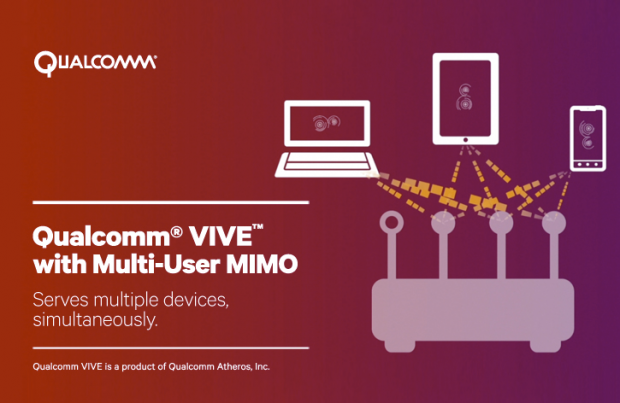Qualcomm is releasing new chipsets for access points that leverage MU-MIMO technology. Current-gen Wi-Fi systems can become easily overwhelmed when multiple users access the system simultaneously. The core reason is because Wi-Fi wasn't designed to serve multiple users at the same time. Wi-Fi sends a single stream of data to a user, then that transmission is terminated and another stream initiates for another user, but there is never more than one active data stream. These snippets in time become increasingly smaller and more frequent as more users log in, effectively throttling the network bandwidth and speed for all users.
MU-MIMO (Multi-User Multiple-Input-Multiple-Output) is a revolutionary new antenna technology that enables communication with multiple devices simultaneously over multiple streams of data. This enables the host router to act more as a switched ethernet fabric and will exponentially increase the ability for wireless routers to handle groups of users. Qualcomm's new chipsets will enable this capability with 802.11ac networks. Qualcomms offerings are going out to the enterprise first, and several vendors will begin offering products supporting MU-MIMO in the middle of 2015.
The only drawback is that most current receivers do not support the technology. Qualcomm's existing Snapdragon 801 and 805 processors support the technology, but will need a software update to operate correctly. MU-MIMO will enter the consumer space as well in 2015, and will allow users to experience much smoother performance on large-scale networks.


